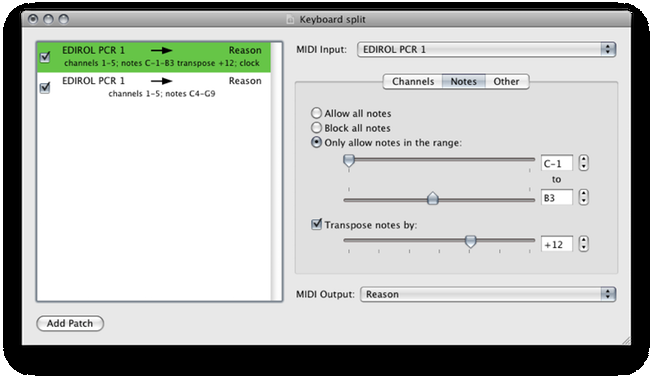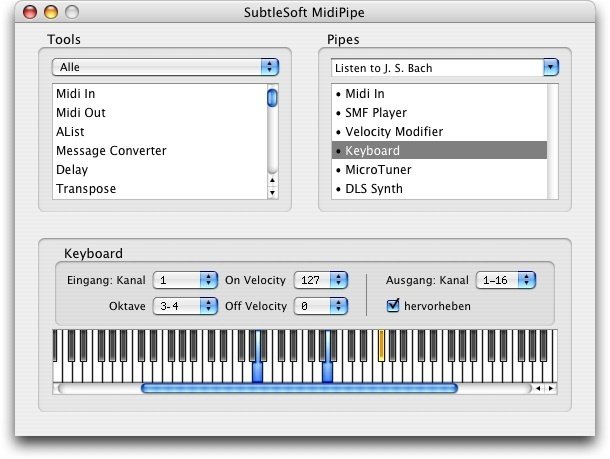

If you experience any compatibility issues with MidiPipe for Mac, consider downloading one of the older versions of MidiPipe.
#Midipipe app download#
The maximum of member channels should never exceed the maximum of voices. Download Old Versions of MidiPipe: 1.4.6. Then this corresponds to the channels OB-6 listens to.īy the way, you can assign less member channels than an MPE device has voices, but never the opposite. I don't have ableton 11 (only 10), but somewhere in the MPE settings, look where you can set the Zone to 'lower' and the amount of member channels to '6'. Thus the way OB-6 has set it up is correct. This implies the upper zone can then use a max of 8 MPE channels (8-15 + 16). 6 channels for MPE in the lower zone, this will occupy channels 1 + 2-7. The two zones allow for using two MPE systems on one MID cable (or two split zones on a keyboard). In MPE it is designed you have 2 zones: a 'lower zone', that uses Midi channel 1 as Master channel with the MPE member channels starting at 2 and going up, and an 'upper zone', that uses Midi channel 16 as Master channel with the MPE member channels starting at 15 and going down. I'll try to check back for troubleshooting.Hi, the problem is not the OB-6. ( and contain some good info) If you didn't see it, reread this and try again. Then you're on to mapping, which is explained elsewhere in this forum, so I won't.

You should see "X-CCXX" appear in the space (Xs are numbers). ) At this point, you should be able to open Virtual DJ, click on Mapping under settings, click on "Simple MIDI Wrapper" then the "Key Learn" button.

Set MidiPipe Input to "DSMidiWifi-out" and MiDiPipe Output to "IAC Bus 1." ( *NOTE* - in MidiPipe you have to drag the item from the left window to the right window to activate the input/output. (*OSCulator note - you should see the buttons in the OSCulator file light up when you move the sliders/knobs/buttons in Touch OSC ) For DJ Control, open "DSMidiWifi" (runs silently in the background) and MidiPipe.

Launch MidiPipe and set the input to "MidiPipe Input 1" and output to "IAC Bus 1." Set the output in OSCulator (under parameters>I/O) and make sure "MidiPipe Output 1" is checked. If you go with OSC, start up OSCulator and load the matching MIDI CC map (believe they came with the OSCulator ).
#Midipipe app mac#
You'll need to enter the IP address of your MAC in the app setting so it links to your computer.
#Midipipe app android#
Programs Required: - Virtual DJ (I was using 7.x) - Android App (I used TouchOSC and DJ Control, both free apps on the Market, DJ Control has an ad-free version for $1.99) - OSCulator ( shareware, easier - ) - OR - qosc ( needs Quartz Composer dev software ) - DSMidiWifi (available here, ) - MidiPipe (the brilliant solution, mad props! - ) Obviously, you also need Wifi access. I'm assuming you can figure out the basics for each program, just noting the things you might miss along the way. I figured there had to be a way to loop internally, and there was. I attempted to rout out-in through a USB MIDI interface, but I think either the software of hardware was killing the loop. The key issue with OSC-style support and Virtual DJ was the inability to grab the MIDI signal internally. I looked around a bit before figuring a lot of this out for myself. With the increased presence of Android phones and tablets, this should come in handy soon, if you haven't already tried and failed.


 0 kommentar(er)
0 kommentar(er)
